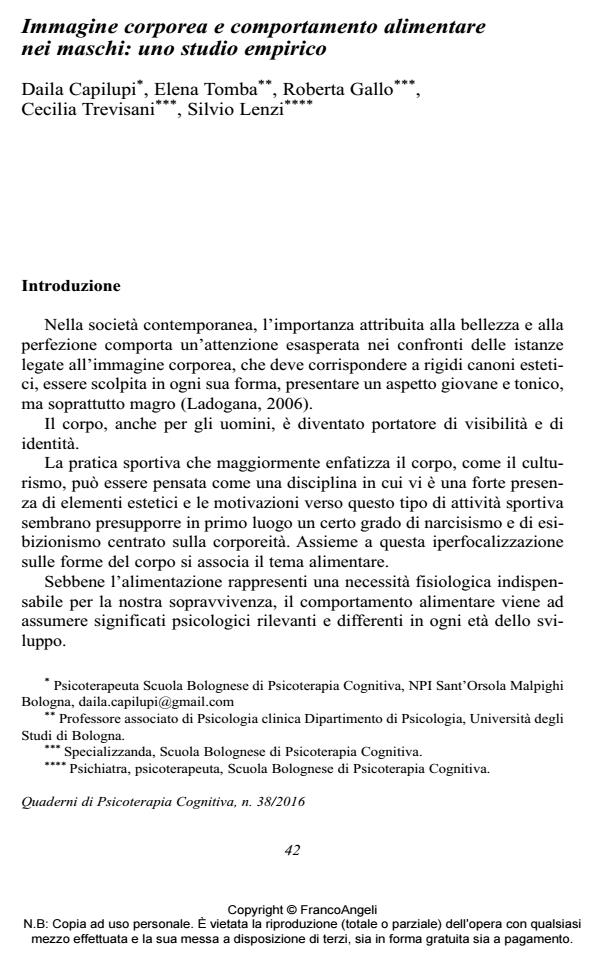Body Image and Eating Behaviour in Males: an empirical study Many Authors consider Body Image Disorders as risk factors for the onset of Eating Disorders
Journal title QUADERNI DI PSICOTERAPIA COGNITIVA
Author/s Daila Capilupi, Elena Tomba, Roberta Gallo, Cecilia Trevisani, Silvio Lenzi
Publishing Year 2016 Issue 2016/38
Language Italian Pages 11 P. 42-52 File size 205 KB
DOI 10.3280/QPC2016-038004
DOI is like a bar code for intellectual property: to have more infomation
click here
Below, you can see the article first page
If you want to buy this article in PDF format, you can do it, following the instructions to buy download credits

FrancoAngeli is member of Publishers International Linking Association, Inc (PILA), a not-for-profit association which run the CrossRef service enabling links to and from online scholarly content.
Pursuing an ideal model of absolute physical perfection is not only a female attitude; the culture of the image has spread equally among women and men, nowadays. The benefits of physical activity have been extensively described in medical literature; nevertheless, excess exercise may lead to compulsive training patterns, even making people feel self-constrained to exercise. Some clinical research demonstrates that Muscle Dismorphia corresponds to the male-equivalent of Anorexia Nervosa. Authors present to pieces of research, performed one 17 years after the other, involving, both the first and in the second study, a population of a 200 male university students, aged between 18 and 28, assiduous fitness centre goers (experimental group), and a sample of the same number of young males who do not practice exercise in gyms (control group). Two questionnaires were issued to both groups: the Fava and Kellner Attitudes Toward Self Scale (ATS) to investigate the perception of self-body image perception, and Garfinkel and Garner Eating Disorder Inventory (EDI) about the eating behaviour. Results have shown that subjects who spend many hours per week in the gym, have a poor self-approval and have a relatively high risk to turn into eating disorders. The same trial was replicated 17 years later: no pathology was observed in the assiduous gym goers, and this seems to be in line with the trend of the last 3 decades, during which gym exercise has developed from a mere body building activity into a more self-oriented "wellness" culture.
Keywords: Body dismorphic disorder, male body image disorder, eating disorder, exercise, muscle dismorphia
Daila Capilupi, Elena Tomba, Roberta Gallo, Cecilia Trevisani, Silvio Lenzi, Immagine corporea e comportamento alimentare nei maschi: uno studio empirico in "QUADERNI DI PSICOTERAPIA COGNITIVA" 38/2016, pp 42-52, DOI: 10.3280/QPC2016-038004